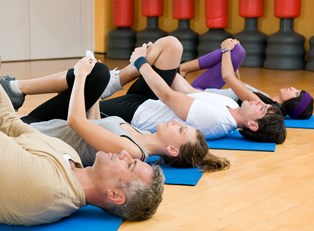Midline Hernias
Umbilical Hernias
A hernia is essentially an internal organ that pushes through the tissues or muscles holding it in place. Of the midline—or the line down the center of the abdomen from the breast bone to the belly button—the umbilical hernia is most common. Umbilical hernias occur mostly in infants and are evidenced by a bulge in or near the belly button. The organs effectively push through the abdominal wall when this occurs.
Umbilical hernias often it correct themselves, but occasionally surgery will be needed as the child gets older. There are generally no symptoms, beyond the bulge that may be visible—it's especially noticeable when the infant cries.
Occasionally an umbilical hernia will appear in an adult, more often in women, and may cause abdominal discomfort. Any other symptoms that might occur in tandem with an umbilical hernia, such as pain, swelling, or discoloration, should be treated as an emergency.
Epigastric Hernia
Other midline hernias may appear, by themselves or in tandem with one another. For example, an epigastric hernia resembles a small bump in the center of the belly above the navel. The abdominal wall may have a spot of weakness or a bit of a gap in it, and this occurs more often in males. Abdominal fat can then actually push through the muscles or tendons intended to hold it in place, creating the bulge or bulges along the midline.
An epigastric hernia is generally small and displays no signs, beyond its visibility. It may, however, cause some discomfort or pain in the abdomen. Despite the lack of problems, it's generally best to have them repaired by a doctor, so that they don't continue to grow larger. Additionally, if it isn’t fat that sneaks through the muscles and tendons, it may be an internal organ which can be problematic. If the bowel pushes through the abdominal wall, it can become “strangled,” which cuts off blood flow, kills the tissue, and turns into blood poisoning quickly. Strangulated hernias are nearly always an emergency situation.
Did you know...
- Starting to feel claustrophobic? The smells of apples may help keep your claustrophobic feelings at bay according to a 1995 study by Dr. Alan Hirsch. Green apples, specifically, helped people change their perception of their space. Maybe they thought of expansive apple orchards? Cucumbers and barbecue made the feelings worse.
- Are you currently or often tired? As contradictory as it may sound, one of the best things you can do is exercise! It gives you more energy by improving your blood flow and increasing your oxygen throughout your body. You don't need to do much; a brisk walk is all it takes!
- Just saying the words "thank you" can measurably improve your mood. Researchers can actually measure happiness and changes in brain structure when people practiced regular "grateful thinking." This included things like writing thank you notes, writing gratitude journal entries, mindfully counting their blessings, and thanking friends. It may be helpful in overcoming depression!
- A hearty laugh is good for the heart. Laughing can increase blood flow by 20%. Additionally, looking on the bright side can help you live longer. Studies have shown that a more optimistic outlook is linked to a healthier heart, lower blood pressure, and a lower risk for coronary artery disease.
- There are many factors that contribute to your body odor, but one of the strongest links is our diet. This may be some bad news for meat-lovers because many studies have shown that those who refrained from or ate less red meat were judged as being more pleasant smelling. The meat sweats are real, and they don’t smell great!




